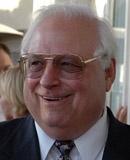Walton Francis: Open Season doesn’t have to be overwhelming
Walton Francis, expert and adviser on federal health insurance joined Federal News Radio Senior Correspondent Mike Causey for an online chat about navigating FE...
Figuring out where your family fits into the self-plus-one equation? Reviewing retirement plans or managing your Medicare? Are you in Open Season overload?
Walton Francis, federal health insurance expert on Wednesday joined Federal News Radio Senior Correspondent Mike Causey for an online chat about navigating FEHBP’s increases and plan eliminations for 2016. Francis is the author of Checkbook Guide to Health Plans for Federal Employees.
Perhaps the biggest takeaway from the conversation: Be patient and don’t be afraid to do your research. The Office of Personnel Management’s special Open Season number is open — 800-332-9798 — though if you have trouble getting through, you and thousands of others are in the same boat. Visit OPM’s premiums site, or head to your Human Resources office for answers. What’s important is that you choose the plan that’s right for you.
Self-plus-one
For the first time federal employees can sign up for a self-plus-one option under the Federal Employee Health Benefits Program. The self-plus-one covers an enrollee and one eligible family member.
The savings from self-plus-one are likely to range between $100 and $200, Francis said, though “the big money savings for most will come from changing plans.”
The option is also likely to be as good, if not better, than two self-only enrollments, Francis said.
“You pay only one maximum out of pocket rather than two if both of you have very high expenses,” Francis said. “And the premium differences are small. You lose nothing by joining self-plus-one. It has the same survivor rights, the same future Open Season rights, the same benefits, etc., as self-plus-family. Make the switch and while you are at it, compare plans as well to see if you can save a few thousand dollars.”
Francis said it’s important to consider your loved ones when choosing a plan.
If someone were to die while under a self-only enrollment, their partner would lose FEHBP forever.
But don’t bend over backward under a certain plan for fear of losing coverage for a child.
“Your child can always enroll in an inexpensive Affordable Care Act plan, and if his income is low the premium will be almost entirely offset by a premium tax credit,” Francis said. “Or if he gets a good job his employer will probably provide insurance. Make the decision that makes sense for the two of you and any children who live at home, and deal with the oldest’s insurance choices when and as they present themselves.”
Retirement and Medicare Part B
For those federal workers focused on retirement, Francis said belonging to any FEHBP plan for five years prior to retiring allows you to take coverage into retirement.
“You will still have Open Seasons as you did while working,” he said.
Francis said even if you are not thinking about retirement, you will be when you start receiving tons of mail around your 65th birthday.
“One caution: if you are still working at age 65 and under FEHBP insurance, delay Medicare Part B enrollment until you actually retire,” he said. “Otherwise you will pay a lot of premium for no benefit as Medicare is ‘secondary’ in this situation.”
You are not legally required to sign up for Part B, Francis said, but if you don’t sign up when you turn 65 (unless you are still working and covered by employer insurance) there is a penalty of paying an extra 10 percent in Part B premium for every year you delayed.
“Most people join Part B, but many don’t,” he said. “That good plan you are in at age 64 doesn’t turn into a pumpkin at age 65. You sign up at a Social Security office.”
Francis said there are many options that are good complements for both Parts A and B.
“Look among the many plans that give you the 100 percent wraparound deal, where you pay nothing for hospital and doctor,” Francis said. “And choose one with a low premium because once you have 100 percent it doesn’t get any better. Take a look at Aetna Direct consumer driven, MHBP high deductible, Blue Cross Basic and GEHA standard.”
And when you do sign up for Part B, Francis has a tip for reducing your ‘high income’ penalty.
“The premium is based on your Adjusted Gross Income from your tax return two years ago. But you can apply to Social Security to adjust your income downward if you have just retired. You won’t be able to get an adjustment for your capital gain. You could delay and take the penalty, but the penalty is 10 percent a year as long as you are in Part B. So you will have to do some arithmetic to see what works best for you. Regardless, I would delay Part B enrollment as long as you can this year since there is an extra one-year ‘zap’ in 2016 for those with high incomes.”
Copyright © 2024 Federal News Network. All rights reserved. This website is not intended for users located within the European Economic Area.




